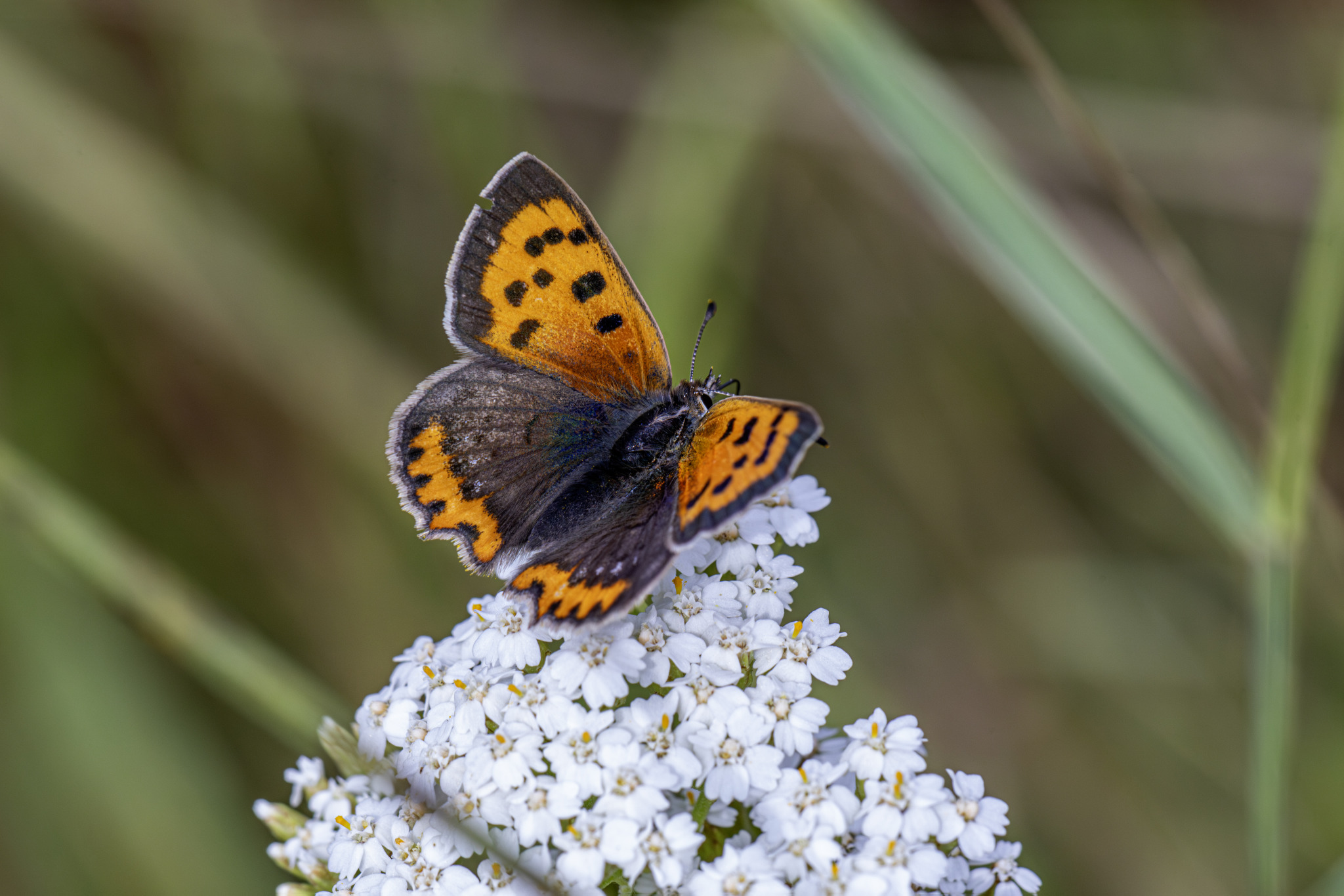The Small Copper (Lycaena phlaeas) is a striking and vibrant butterfly that is widely distributed and relatively common across various regions. Its bright coloration and dynamic behavior make it a delightful sight for butterfly enthusiasts and casual observers alike.
Description
- Appearance:
- Upperside: The upper side of the wings is a vivid coppery orange with dark brown or black spots and margins. The forewings are primarily orange with a dark border, while the hindwings are brown with an orange border.
- Underside: The underside of the forewings is a paler orange with black spots, and the hindwings are greyish-brown with a series of white-ringed black spots.
- Size: The wingspan ranges from 25 to 35 millimeters, making it a small butterfly.
Habitat
- Distribution: The Small Copper is found throughout Europe, Asia, and North America. It is a highly adaptable species that occupies a wide range of habitats.
- Preferred Environment: This butterfly thrives in open, sunny habitats, including grasslands, heathlands, gardens, roadsides, and wastelands. It prefers areas with sparse vegetation where its larval food plants are present.
Behavior and Ecology
- Flight Period: The Small Copper typically has two to three generations per year, with adults flying from April to October. In some regions, especially in warmer climates, there can be up to four generations.
- Diet:
- Larvae: The caterpillars feed on various species of dock (Rumex spp.) and sorrel (Rumex acetosa and Rumex acetosella).
- Adults: Adult butterflies feed on nectar from a variety of flowers, including buttercups, daisies, heathers, and knapweeds.
- Reproduction:
- Egg Laying: Females lay eggs singly on the leaves of the host plants. The eggs are small, round, and white.
- Larvae and Pupae: The caterpillars are green with a darker dorsal stripe and feed on the leaves of the host plants. Pupation occurs in a concealed location close to the ground.
Conservation
- Threats: While the Small Copper is generally not considered threatened, it can be impacted by habitat loss, agricultural practices, and climate change.
- Conservation Efforts: Conservation of the Small Copper focuses on maintaining and creating suitable habitats with an abundance of larval food plants and nectar sources. Encouraging the growth of docks and sorrels in meadows, grasslands, and garden settings can support healthy populations.
Observing Small Coppers
- Best Times: The best times to observe the Small Copper are during its flight periods in spring, summer, and early autumn.
- Watching Tips: Look for them in sunny, open areas where their host plants grow. They are often seen basking on bare ground or low vegetation with their wings open to absorb the sun’s warmth.
Interesting Facts
- Territorial Behavior: Males are highly territorial and can often be seen chasing away other butterflies or insects that enter their territory.
- Rapid Flight: The Small Copper has a fast and darting flight, making it a challenging butterfly to follow and observe closely.
- Variation: There is noticeable variation in the coloration and markings of the Small Copper, particularly in the size and number of black spots on the wings.
Summary
The Small Copper (Lycaena phlaeas) is a vibrant and resilient butterfly that brings a splash of color to a wide range of habitats. Its adaptability and widespread distribution make it a familiar species in many regions. Conservation efforts that focus on maintaining diverse and open habitats with plenty of larval food plants can help ensure that this charming butterfly continues to thrive. Observing the Small Copper offers a glimpse into the dynamic and beautiful world of butterflies.
Views: 1730
Subscribe to the newsletter:
